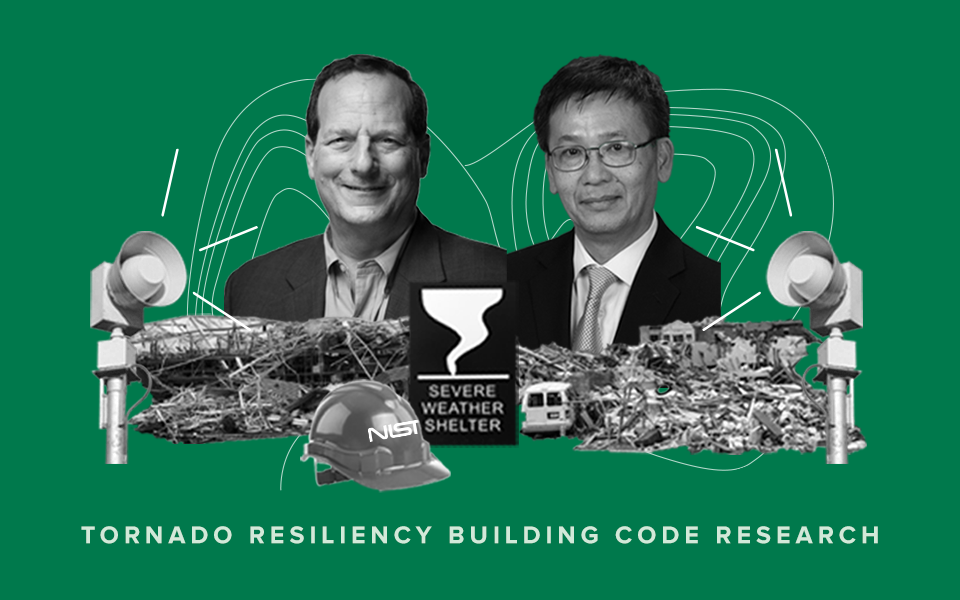
B. Hayes/NIST
Long Phan and Marc Levitan, research structural engineers specializing in windstorm impact reduction at the U.S. Department of Commerce's National Institute of Standards and Technology (NIST), have won the Samuel J. Heyman Service to America Medal in the category of Science, Technology and Environment.
Every year, the Partnership for Public Service awards medals in seven categories to candidates selected from across the federal government to recognize their innovative efforts to save lives and deliver critical services to the public. These awards are commonly known as the "Sammies" and are thought of as "the Oscars of public service."
The award recognizes Phan and Levitan's decades-long effort to develop standards and building codes to make structures resistant to tornadoes. Communities across the U.S. have already started adopting these standards and codes to protect critical facilities like schools, hospitals and emergency response facilities from the vast majority of tornadoes.
"We are extremely proud of Long and Marc's accomplishments, and this award is very well deserved," said NIST Director Laurie E. Locascio. "The standards and building codes they helped develop and advocate for will have lasting effects long into the future, making our communities safer and saving countless lives."
When Phan first joined NIST more than 40 years ago, the common belief was that tornadoes were too powerful to design buildings to resist. "Engineers thought tornado windspeeds were so high, there's no way we can economically design structures to withstand them," he said.
But that thinking started to change around 1997. After investigating damage from a devastating tornado in Jarrell, Texas, Phan and his NIST colleagues suspected that the way tornado severity was measured, the Fujita Scale, overestimated the strength of tornadoes. He was instrumental in the effort to create a more accurate scale for measuring tornado severity, the Enhanced Fujita Scale. This new scale showed that most tornadoes have windspeeds below 135 miles per hour - a windspeed that buildings can readily be built to withstand - paving the way for the first standards and building codes for tornadoes.
">






